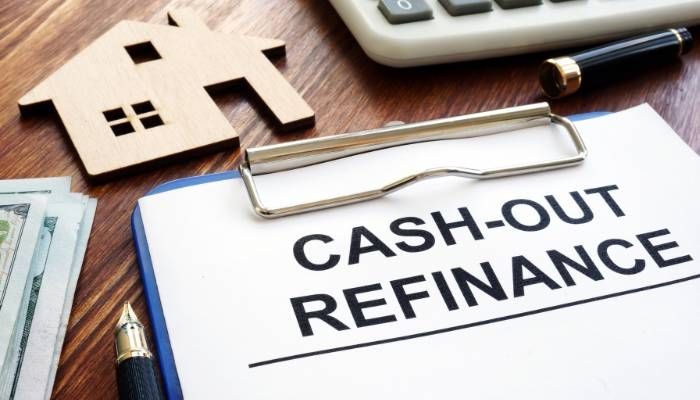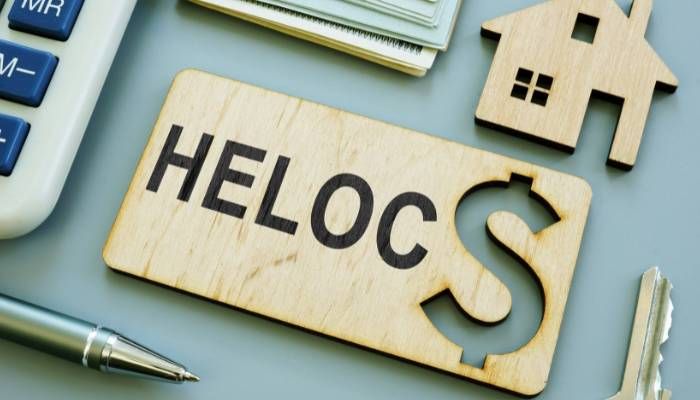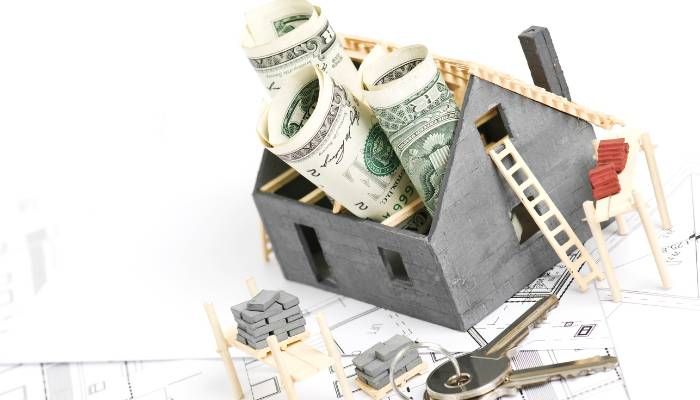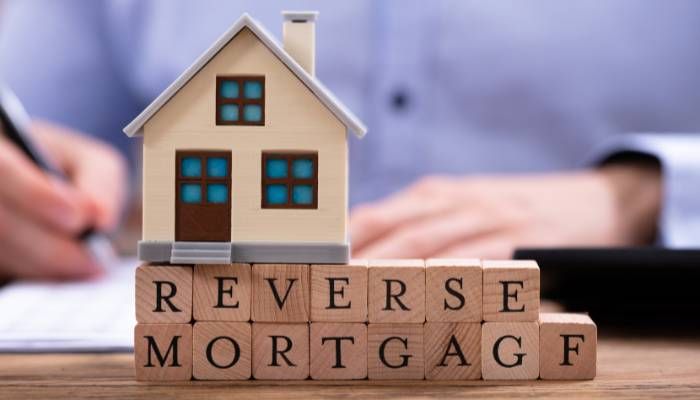The Benefits and Drawbacks of a Cash-Out Refinance Home Loan
A cash-out refinance, not to be confused with a HELOC, is a type of home loan mortgage that allows homeowners to access the equity in their home and use it to make home improvements, pay off high-interest debt, or invest in other assets. In a cash-out refinance, the borrower takes out a new loan that is larger than the outstanding balance on their current mortgage and receives the difference in cash.
While a cash-out refinance can be a good option for some homeowners, it’s important to weigh the potential benefits and drawbacks before making a decision. In this outline, we will discuss the benefits and drawbacks of a cash-out refinance and provide some factors to consider before applying.
A cash-out refinance is a way for homeowners to access the equity in their home and use it for a variety of purposes. Here’s how it works:
- The homeowner applies for a new mortgage that is larger than the outstanding balance on their current mortgage.
- The lender evaluates the borrower’s creditworthiness and the value of the home to determine the maximum loan amount.
- If the borrower is approved for the cash-out refinance, they will receive the difference between the new loan amount and the outstanding balance on their current mortgage in cash.
- The borrower will then use this cash for the purpose they intended, such as home improvements, paying off high-interest debt, or investing in other assets.
- The borrower will then make monthly payments on the new mortgage, which will include the amount borrowed plus interest.
It’s important to note that a cash-out refinance typically results in a longer repayment period and a higher overall loan amount due to the added cash borrowed. It may also come with higher interest rates, depending on the borrower’s creditworthiness and the lender’s terms.
The benefits of a cash out refinance
There are several benefits to a cash-out refinance home loan that may make it a good option for some homeowners. Here are some of the potential benefits of a cash-out refinance:
- Lower monthly mortgage payments: If interest rates have decreased since the borrower took out their original mortgage, a cash-out refinance could potentially result in lower monthly mortgage payments. This can be especially beneficial for homeowners who are struggling to make their current mortgage payments or who want to free up some extra cash each month for other expenses.
- Ability to pay off high-interest debt: One common reason for a cash-out refinance is to pay off high-interest debt, such as credit card debt or student loans. By consolidating this debt into a mortgage with a lower interest rate, the borrower can potentially save a significant amount of money in interest over the life of the loan.
- Potential to improve credit score: By paying off high-interest debt, a cash-out refinance can also help improve the borrower’s credit score. This is because paying off debt can lower the borrower’s credit utilization ratio, which is the amount of credit they are using compared to their credit limit. A lower credit utilization ratio can improve the borrower’s credit score.
- Opportunity to make home improvements: A cash-out refinance can also be a good option for homeowners who want to make improvements to their home but don’t have the cash on hand to pay for them upfront. By using the cash from a cash-out refinance to finance home improvements, the borrower can potentially increase the value of their home, which could make it more appealing to potential buyers in the future.
- Opportunity to invest in other assets: In addition to home improvements, a cash-out refinance can also be used to invest in other assets, such as stocks, a small business, or real estate. By using the cash from a cash-out refinance to invest in these types of assets, the borrower may be able to generate additional income or grow their wealth over time.
It’s important to note that while a cash-out refinance can offer some potential benefits, it’s not right for everyone. It’s important to carefully consider the potential drawbacks and weigh them against the potential benefits before deciding if a cash-out refinance is the right choice for you. Some factors to consider include your current financial situation, your credit score, current interest rates, and the length of time you plan to stay in your home.
The drawbacks of a cash out refinance
While a cash-out refinance can offer some potential benefits, it’s important to also consider the potential drawbacks before making a decision. Here are some of the drawbacks of a cash-out refinance to consider:
- Increased overall loan amount and longer repayment period: A cash-out refinance involves taking out a new mortgage that is larger than the outstanding balance on the borrower’s current mortgage. This means the borrower will be borrowing more money and will have a longer repayment period. This can result in a higher overall loan amount and higher monthly mortgage payments.
- Higher interest rates: Depending on the borrower’s creditworthiness and the lender’s terms, a cash-out refinance may come with higher interest rates than the borrower’s current mortgage. This can result in higher overall loan costs and make it more difficult to pay off the loan.
- Potential for negative equity: If the value of the borrower’s home decreases after they take out a cash-out refinance, they may end up with negative equity. This means they owe more on the mortgage than the home is worth. Negative equity can make it difficult or impossible to sell the home or refinance the mortgage, and it can also make it more difficult to qualify for other types of loans.
- Fees and closing costs: A cash-out refinance involves many of the same fees and closing costs as a traditional mortgage, such as origination fees, appraisal fees, and title search fees. These costs can add up and make the overall cost of the refinance more expensive.
It’s important to carefully consider these potential drawbacks and weigh them against the potential benefits before deciding if a cash-out refinance is the right choice for you. Some factors to consider include your current financial situation, your credit score, current interest rates, and the length of time you plan to stay in your home.
Factors to consider before a cash out refinance
here are several factors that homeowners should consider before applying for a cash-out refinance. Here are some things to consider:
- Current financial situation and credit score: It’s important to carefully evaluate your current financial situation and credit score before applying for a cash-out refinance. A strong credit score and stable financial situation can help you qualify for a lower interest rate and more favorable terms on the loan.
- Current interest rates and comparison to potential refinance rates: Interest rates can fluctuate over time, and it’s important to consider the current interest rates when deciding if a cash-out refinance is right for you. If interest rates are currently lower than when you took out your original mortgage, a cash-out refinance could potentially result in lower monthly mortgage payments. However, if interest rates are higher than your current mortgage, a cash-out refinance could result in higher monthly payments.
- Length of time planning to stay in the home: It’s also important to consider the length of time you plan to stay in your home when deciding if a cash-out refinance is right for you. If you plan to stay in the home for a longer period of time, the benefits of a cash-out refinance may outweigh the drawbacks. However, if you plan to sell the home in the near future, the costs of a cash-out refinance may not be worth it.
- Potential for negative equity: As mentioned above, a cash-out refinance can result in negative equity if the value of the home decreases after the refinance. It’s important to consider the potential for negative equity and how it may affect your ability to sell the home or refinance the mortgage in the future.
Overall, it’s important to carefully consider these and other factors before deciding if a cash-out refinance is the right choice for you.
Final Thoughts
In conclusion, a cash-out refinance home loan can be a good option for some homeowners, offering the opportunity to lower monthly mortgage payments, pay off high-interest debt, improve credit scores, make home improvements, or invest in other assets. However, it’s important to also consider the potential drawbacks of a cash-out refinance, including increased overall loan amounts, longer repayment periods, higher interest rates, the potential for negative equity, and fees and closing costs associated with the refinance process.
People Also Ask About Cash Out Refinances
What’s the difference between a HELOC and cash out refinance?
A home equity line of credit (HELOC) and a cash-out refinance are both ways for homeowners to access the equity in their homes and use it for a variety of purposes. However, there are some key differences between the two options.
One difference is how the funds are borrowed. A HELOC is a line of credit that allows the borrower to borrow against the equity in their home as needed, up to a certain limit. The borrower can then repay the borrowed funds, plus interest, over a set period of time. A cash-out refinance, on the other hand, involves taking out a new mortgage that is larger than the outstanding balance on the borrower’s current mortgage and receiving the difference in cash.
Another difference is the repayment terms. A HELOC typically has a variable interest rate and a repayment period of 10-20 years, during which the borrower makes payments on the interest only. A cash-out refinance, on the other hand, typically has a fixed interest rate and a repayment period of 15-30 years, during which the borrower makes payments on both the principal and interest.
What is the average cost of a cash out refinance?
The average cost of a cash-out refinance can vary depending on a number of factors, including the lender, the borrower’s creditworthiness, and the terms of the loan. Some of the costs that may be associated with a cash-out refinance include:
- Origination fees: This is a fee charged by the lender for processing the loan application and underwriting the loan. This fee is typically a percentage of the loan amount and can vary from lender to lender.
- Appraisal fees: Lenders typically require an appraisal to determine the value of the borrower’s home before approving a cash-out refinance. The borrower will be responsible for paying the appraisal fee, which can range from $300 to $700.
- Title search fees: Lenders will also typically require a title search to verify that the borrower owns the property and there are no liens or encumbrances on the title. The borrower will be responsible for paying the title search fee, which can range from $100 to $400.
- Closing costs: Closing costs are fees associated with closing the loan, such as attorney fees, recording fees, and document preparation fees. These costs can vary depending on the lender and location, but they typically range from 2-5% of the loan amount.
- Interest: The borrower will also be responsible for paying interest on the cash-out refinance, which will be a percentage of the loan amount. The interest rate will depend on the borrower’s creditworthiness and the lender’s terms.
Overall, the average cost of a cash-out refinance can range from 3-6% of the loan amount, depending on the lender and the borrower’s creditworthiness. It’s important to carefully consider the costs of a cash-out refinance and compare them to the potential benefits to determine if it is the right choice for you.
Who pays for the appraisal on a cash out finance?
In a cash-out refinance, the borrower is typically responsible for paying the appraisal fee. An appraisal is a professional opinion of the value of the borrower’s home, and it is typically required by the lender before approving a cash-out refinance. The lender uses the appraisal to determine the maximum loan amount they are willing to extend to the borrower.
The appraisal fee is typically paid to the appraiser, who is a licensed professional with expertise in determining the value of real estate. The fee can vary depending on the location and complexity of the appraisal, but it typically ranges from $300 to $700.








